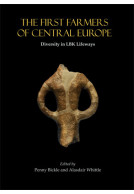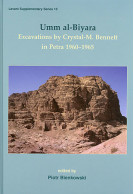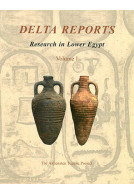Roads in the Deserts of Roman Egypt (Paperback)
Analysis, Atlas, Commentary
Imprint: Oxbow Books
Pages: 352
Illustrations: b/w
ISBN: 9781789251562
Published: 25th June 2019
Script Academic & Professional
Pages: 352
Illustrations: b/w
ISBN: 9781789251562
Published: 25th June 2019
Script Academic & Professional
You'll be £38.00 closer to your next £10.00 credit when you purchase Roads in the Deserts of Roman Egypt. What's this?
+£4.99 UK Delivery or free UK delivery if order is over £40
(click here for international delivery rates)
Order within the next 2 hours, 6 minutes to get your order processed the next working day!
Need a currency converter? Check XE.com for live rates
(click here for international delivery rates)
Order within the next 2 hours, 6 minutes to get your order processed the next working day!
Need a currency converter? Check XE.com for live rates
Egypt under the Romans (30 BCE–3rd century CE) was a period when local deserts experienced an unprecedented flurry of activity. In the Eastern Desert, a marked increase in desert traffic came from imperial prospecting/quarrying activities and caravans transporting wares to and from the Red Sea ports. In the Western Desert, resilient camels slowly became primary beasts of burden in desert travel, enabling caravaneers to lengthen daily marching distances across previously inhospitable dunes. Desert road archaeology has used satellite imaging, landscape studies and network analysis to plot desert trail networks with greater accuracy; however, it is often difficult to date roadside installations and thus assess how these networks evolved in scope and density in reaction to climatic, social and technological change.
Roads in the Deserts of Roman Egypt examines evidence for desert roads in Roman Egypt and assesses Roman influence on the road density in two select desert areas: the central and southern section of the Eastern Desert and the central Marmarican Plateau and discusses geographical and social factors influencing road use in the period, demonstrating that Roman overseers of these lands adapted remarkably well to local desert conditions, improving roads and developing the trail network. Crucially, the author reconceptualises desert trails as linear corridor structures that follow expedient routes in the desert landscape, passing through at least two functional nodes attracting human traffic, be those water sources, farmlands, mines/quarries, trade hubs, military installations or actual settlements. The ‘route of least resistance’ across the desert varied from period to period according to the available road infrastructure and beasts of burden employed. Roman administration in Egypt not only increased the density of local desert ‘node’ networks, but also facilitated internodal connections with camel caravans and transformed the Sahara by establishing new, or embellishing existing, nodes, effectively funnelling desert traffic into discernible corridors.Significantly, not all desert areas of Egypt are equally suited for anthropogenic development, but almost all have been optimised in one way or another, with road installations built for added comfort and safety of travellers. Accordingly, the study of how Romans successfully adapted to desert travel is of wider significance to the study of deserts and ongoing expansion due to global warming.
Other titles in Oxbow Books...















